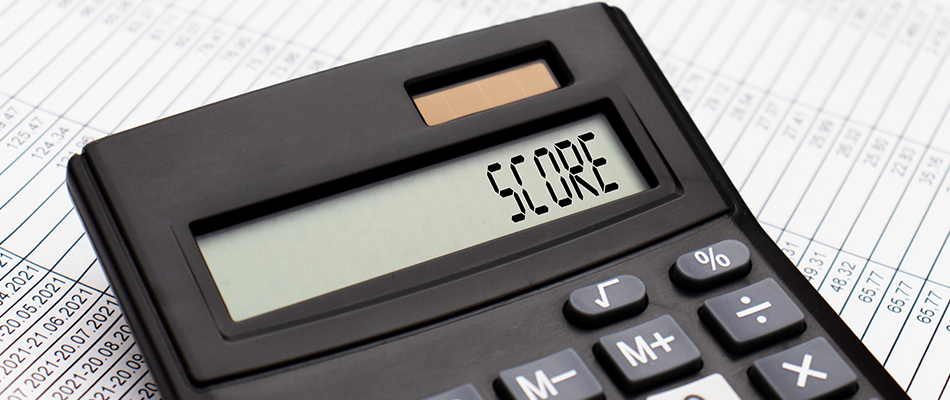The matric exams are the most critical papers students in South Africa appear for in their final year of schooling. Their scores on these exams determine their future educational paths and the programmes they will be eligible for at university. Understanding the structure of the exams and how the marks are calculated can better prepare students to appear for the examinations. It can help them calculate how much time to dedicate to each subject.
This article will explain how are matric final marks calculated, how much is needed to pass, and how you can calculate your scores.
Table of Contents
- Introduction to Matric Final Marks Calculation
- How are Matric Final Marks Calculated?
- How Much is Needed for Matric Pass?
- How to Calculate Matric Points?
- Example Calculations for Matric Marks and Points
- Programmes you are Eligible for After Calculating Matrics Marks
- What is the Importance of Understanding Matric Marks Calculation?
- Admission Process Guidence After Matric Result
- Financial Support for Your Academic Pathway
- Conclusion
- How are Matric Final Marks Calculated in South Africa? – FAQs
Introduction to Matric Final Marks Calculation
The matric exams are formally known as the National Student Certificate (NSC) exams, and students in South Africa are required to appear for them to pass matric or grade 12. Students who pass these exams are awarded an NQF level 4 (National Qualification Framework) qualification.
The matric final marks are the most important scores for students preparing to further their higher education. Once you understand how are matric final marks calculated, you will be able to understand your scores. The score on the matric exams indicates whether a student is equipped for a degree programme, a certificate course, or vocational training. They also signify that a student has passed grade 12, but the process does not end there.
These marks are then converted to an Admission Point Score (APS), which universities use as an eligibility criterion during the application process. A higher score on the matric benefits students by allowing them to apply for a major of their choice.
How are Matric Final Marks Calculated?
The matric exam marks are calculated based on School-Based assessments (SBA) and the final exams. The SBA accounts for 25% of the final score, and the exams account for 75%. Students must score well during the exam since it contributes to most of the final score.
The SBAs comprise assignments, tests, and exams students must complete during the school year. The only exception is Life Orientation, which is completed based on the SBA score.
When students try to determine ‘how are matric final marks calculated?’ they need to understand the tiered-level scoring system of the matric exams. In this system, a score below 29% means a fail for the subject. The table below will help students understand the percentage scores required to ace the exams.
|
Percentage |
Achievement |
|
80 – 100% |
Outstanding achievement |
|
70 – 79% |
Meritorious achievement |
|
60 – 69% |
Substantial achievement |
|
50 – 59% |
Moderate achievement |
|
40 – 49% |
Adequate achievement |
|
30 – 39% |
Elementary achievement |
|
0-29% |
Fail |
How Much is Needed for Matric Pass?
The score that a student receives for each subject is calculated to determine what level of pass they have achieved: bachelor, diploma, higher certificate, or NSC pass. The pass level allows students provisional admission into the course of their choice. A higher pass level allows students to complete a professional degree and join the workforce with a much higher salary as compared to someone who achieves a pass level.
Now that we understand how are matric final marks calculated, let us look at the individual marks students need for the various pass levels under the NSC.
Bachelors Pass
The bachelor pass requirements that students must fulfil are-
- 40% or higher for the home language
- 50% or higher for 4 high credit subjects
- 30% or higher for 2 other subjects
Diploma Pass
The diploma pass requirements students must have are:
- 40% or higher for the home language
- 40% or higher for 3 high credit subjects
- 30% or higher for 2 other subjects
Higher Certificate Pass
The higher certificate pass requirements that students must have areas follows:
- 40% or higher in the home language
- 40% or higher in 2 subjects
- 30% or higher for 4 other subjects
NSC Pass
In-depth details on the NSC pass requirements are given below.
- 40% or higher for the home language
- 40% or higher for 2 subjects
- 30% or higher for 2 other subjects
OR
- If students fail one subject, including the home language, then 30% or higher for the 6 remaining subjects
How to Calculate Matric Points?
The matric score students receive only allows provisional acceptance into higher education universities and institutes. Once you learn how are matric final marks calculated, you can determine the pass you have achieved.
However, to gain admission to universities, the NSC scores are converted into an APS level that allows them to determine eligibility requirements based on individual courses.
The APS is scored from a maximum of 42 points and takes into account 3 compulsory and 3 elective courses.
|
NSC Points |
APS Level |
|
80 – 100% |
7 |
|
70 – 79% |
6 |
|
60 – 69% |
5 |
|
50 – 59% |
4 |
|
40 – 49% |
3 |
|
30 – 39% |
2 |
|
0-29% |
1 |
Since we have learnt how are matric final marks calculated, it is easy to calculate the APS level:
- List out the percentage scored for each, excluding life orientation
- Convert the percentage into APS levels
- Add the numbers
- Reach the final score
Each university has an individual minimum requirement score for APS subject-specific scores based on the programme selected. The below table lists the minimum APS scores required for different pass levels. Final requirements vary across universities, and students should research and check inidvidual eligibility criteria.
|
Subjects |
Bachelor’s Degree |
Diploma |
Higher Certificate |
National Senior Certificate (NSC) |
|
High Credit Subject |
APS 4 in four subjects |
APS 3 in four subjects |
– |
– |
|
Home Language |
APS 3 |
APS 3 |
APS 3 |
APS 3 |
|
2 other subjects |
APS 2 in the other two subjects |
APS 2 in the other two subjects |
APS 3 in two subjects APS 2 in the other two subjects |
APS 3 in two subjects APS 2 in four subjects |
|
Total Score |
23 |
19 |
15 |
14 |
Example Calculations for Matric Marks and Points
Let’s examine a hypothetical scenario to understand better the matric score and how it applies to the APS score. For example, a student in their final year of matric wants to pursue a bachelor of Hospitality Management.
Suppose, per their research, they find that they require an APS score of 26 in mathematics and 28 in mathematics literacy. Additionally, they will also need to score a 6 in English. This is how they could calculate their matric points:
Compulsory Subjects:
- Home Language: 65% (APS 5)
- English: 79% (APS 6)
- Mathematics: 53% (APS 4)
Electives:
- Tourism: 86% (APS 7)
- History: 80% (APS 7)
- Hospitality Studies: 78% (APS 6)
- APS Score: 5+6+4+7+7+6=35
Based on the matric final percentage and its complimenting APS level, they will score 35 on the APS Scale. This is well above the required APS score of 26 for admission into the programme.
However, if they had scored a total of 34 but with a score of 5 in English, they would not have been eligible for the programme because they did not meet the APS score requirement for English.
Programmes you are Eligible for After Calculating Matrics Marks
Take the next step in your academic journey with our wide range of programmes designed to suit your career goals. Whether you’re aiming to excel in business, law, public management, or data science, we offer top-tier qualifications tailored to equip you with the skills and knowledge you need to thrive in today’s competitive landscape.
What is the Importance of Understanding Matric Marks Calculation?
It is important for students to understand how are matric final marks calculated as it allows them to prepare sufficiently for subjects that are graded higher. Furthermore, once they learn how to calculate matric points for each subject, they can determine which pass level they have achieved. They need to then convert the matric points into the APS level score to prepare for university applications.
Therefore, students must begin thinking of their higher education aspirations well before they register for the matric exams. They need to research individual programmes and understand the total APS score and subject requirements to gain admission.
This will also allow them to choose the appropriate mathematics option, and pick electives that are relevant to their future course of study. Additionally, students will have ample time to prepare for the matric exams in South Africa.
In order to score a higher percentage on the matric exam, which will, in turn, qualify for a high APS score, students need to:
- Be aware of admission requirements
- Create a study schedule
- Prioritise high-credit subjects
- Allow enough time for elective courses
- Solve past exam papers
- Manage stress
Admission Process Guidence After Matric Result
After matric, taking the next step toward higher education in South Africa is exciting! Here’s a relatable guide to get started:
- Explore Programmes: Pick what matches your passion—business, law, IT, or something else.
- Check Requirements: See if you meet the APS or other criteria.
- Apply Online/In-Person: Fill out forms—easy!
- Submit Documents: Keep ID, certificates, and proof of address ready.
- Wait for Confirmation: Exciting times!
- Register: Seal the deal.
- Seek Funding: Scholarships or aid options await.
- Start Learning: Your future begins now!
Financial Support for Your Academic Pathway
At Regenesys, we believe that financial obstacles should not hinder your educational progress. To help you manage the costs, we collaborate with Student Hero, Fundi, and offer the flexible FlexiPay option. These solutions are designed to make financing your studies easier, so you can focus on what truly matters—your education and future success.
Conclusion
The best way to succeed and score well during the matric exams is to be prepared. Preparation is more than just studying for the subjects; it begins months in advance when students decide on their future field or course of study. As they understand the criteria for each course, they can better select and prepare for subjects to gain a high score.
Regenesys offers many higher certificate and undergraduate programmes for students who pass their matric exams. Be sure to check individual programmes and learn about their requirements.
How are Matric Final Marks Calculated in South Africa? – FAQs
Is the matric score same as the APS level?
The matric score is the percentage students earn for each subject that they appear for during the NSC or matric exam. However, universities convert each subject score to an APS level. Therefore, the APS is derived from the matric score.
What is the difference between the NQF and the APS level?
The NQF level is awarded after students complete a certain level of education. An APS level is determined from the matric score and is a criterion for admission.
What are the compulsory matric subjects?
There are 4 compulsory matric subjects: a home language, another language, mathematics or mathematics literacy, and life orientation.
Why can’t matric scores be used directly for admission?
Matric scores are percentages scored out of 100, while the APS score assigns a level to that score. The maximum APS score a student can achieve is 42.
How to calculate matric points?
Check the final grades for all the subjects, excluding life orientation. Convert the grades to APS points. Next, you add the points, and that is your final score.







